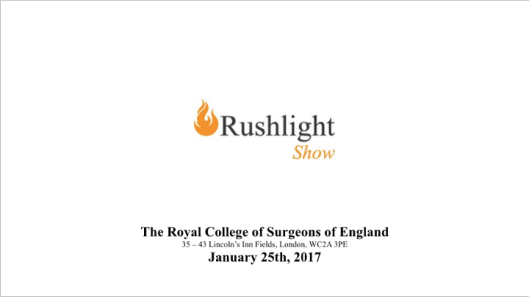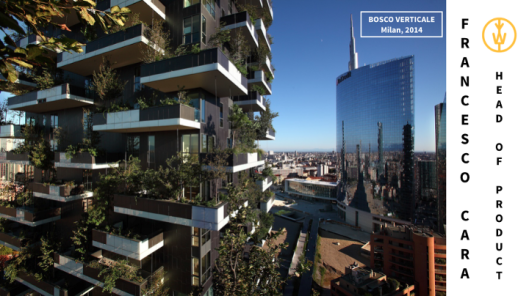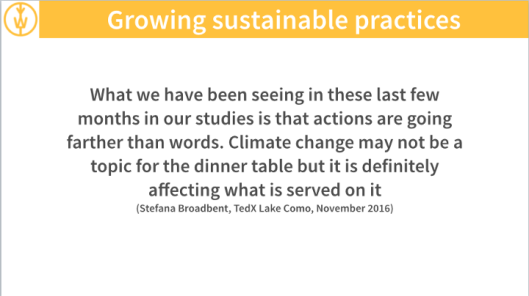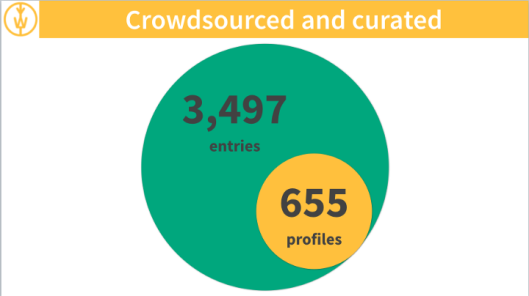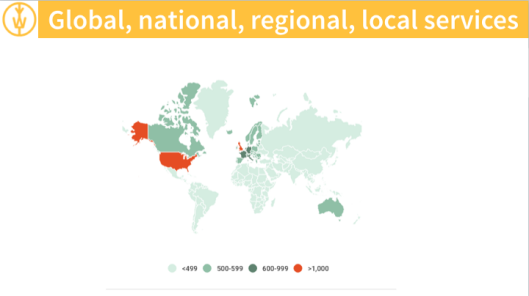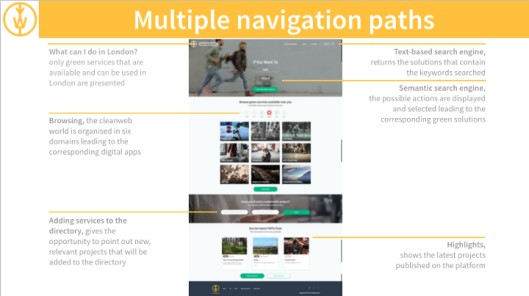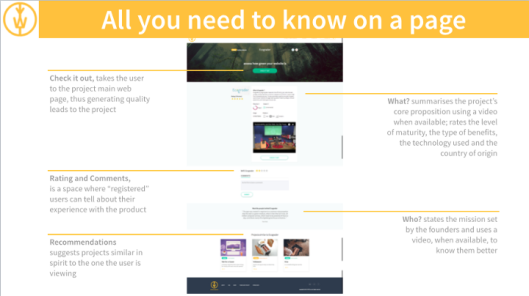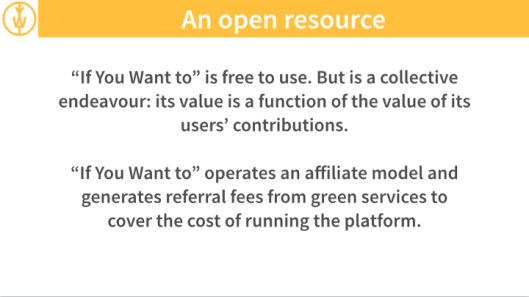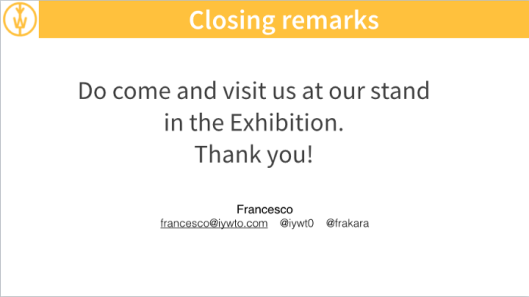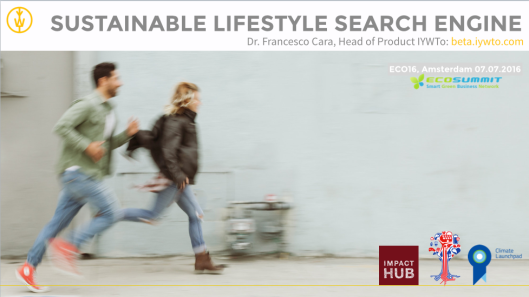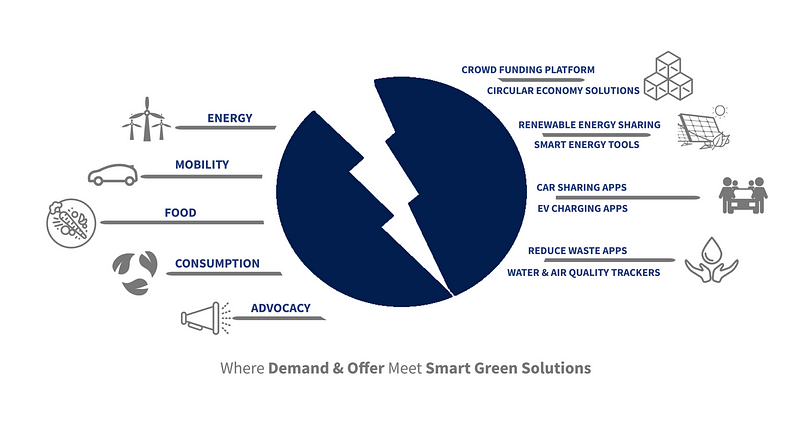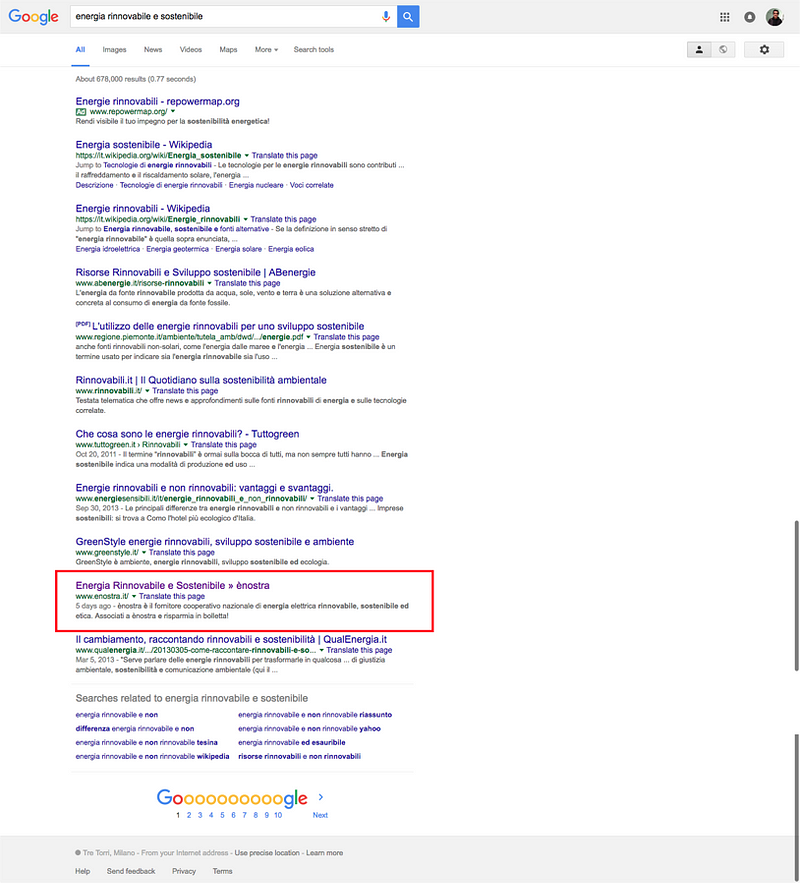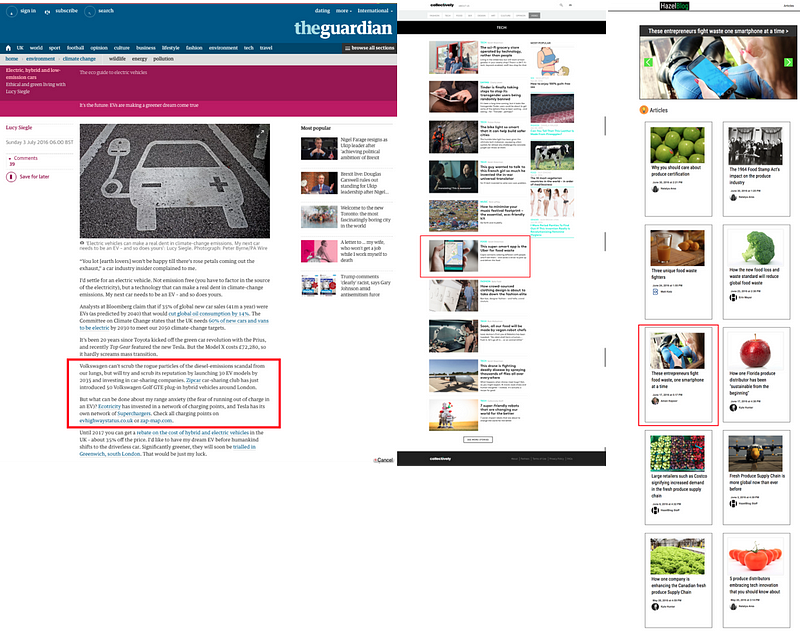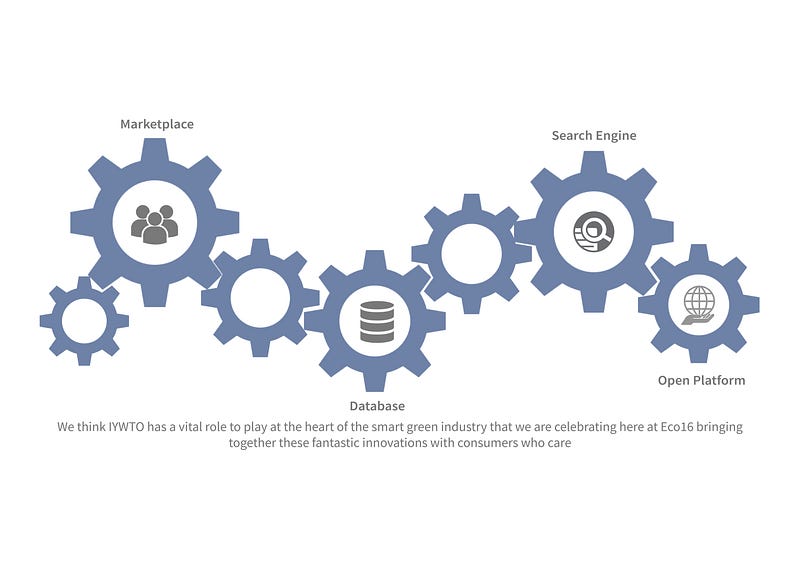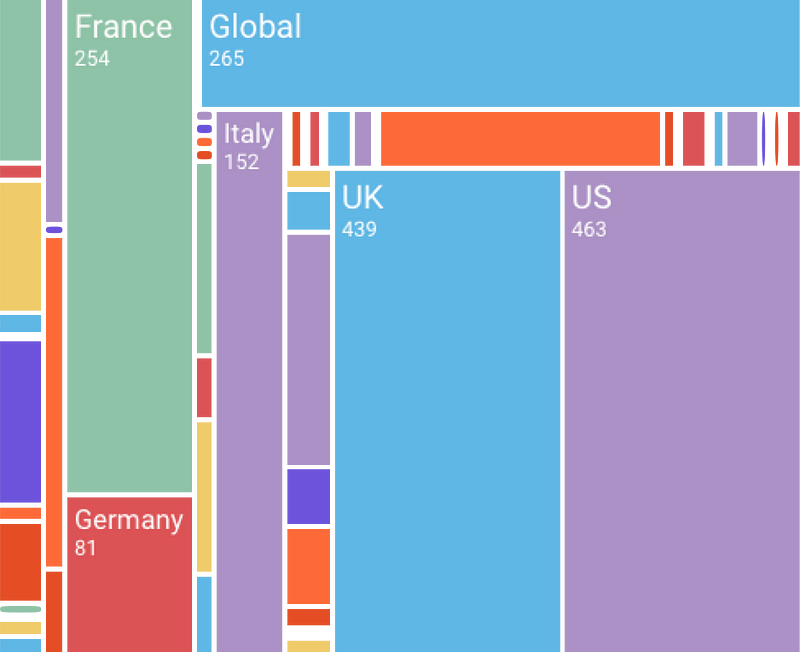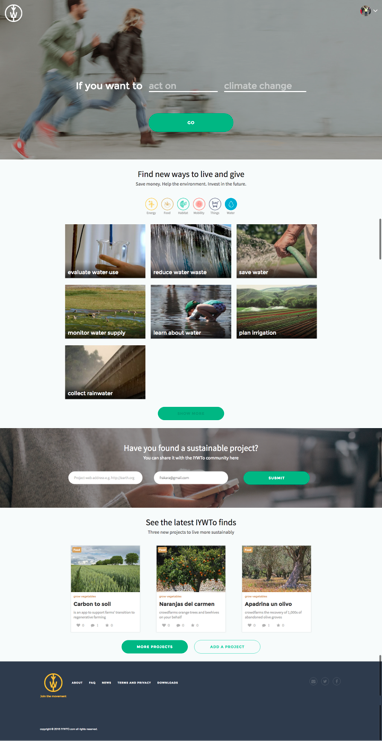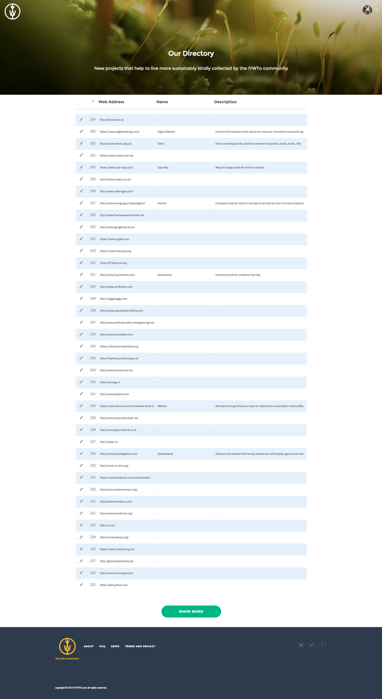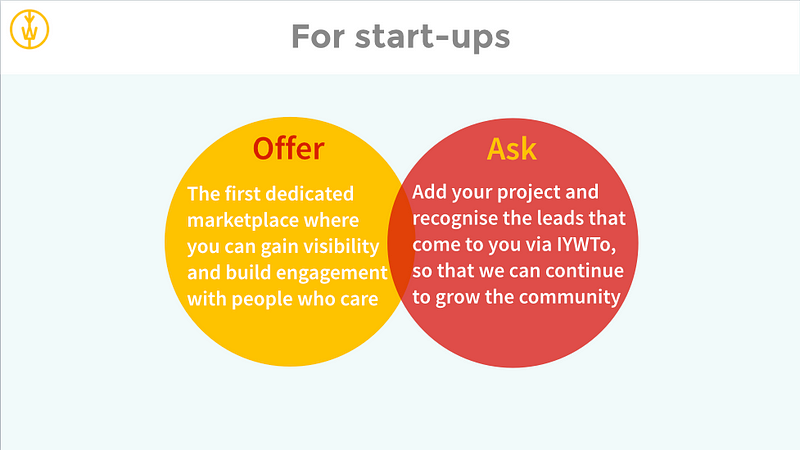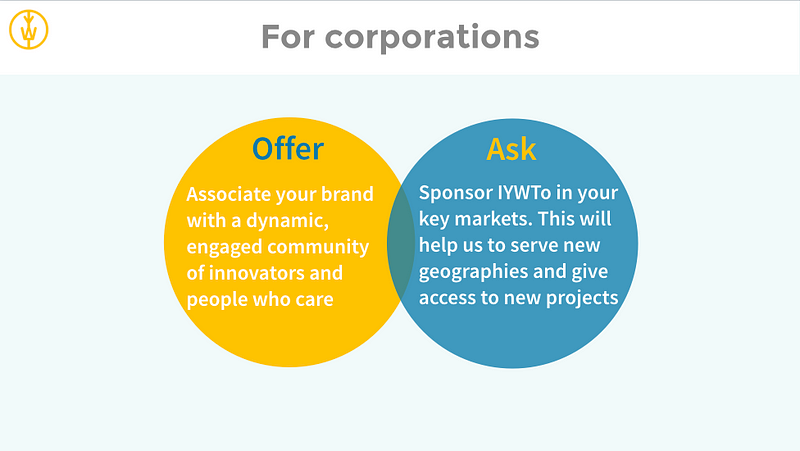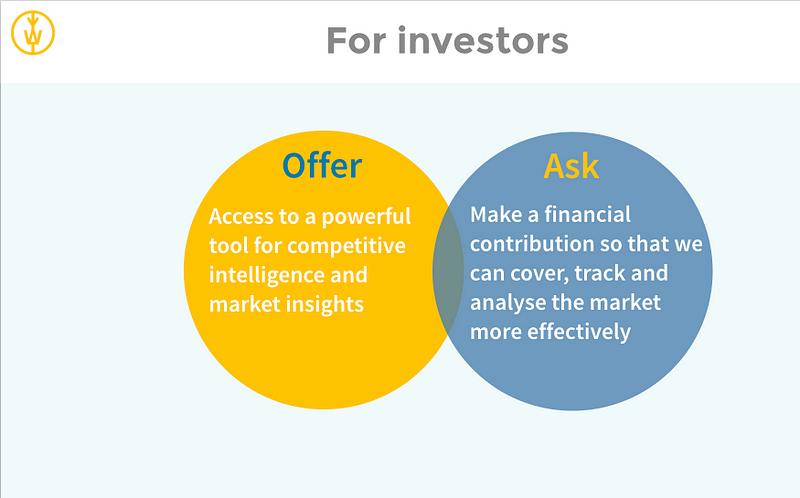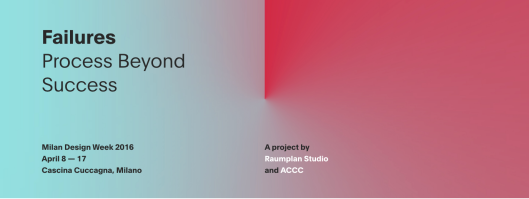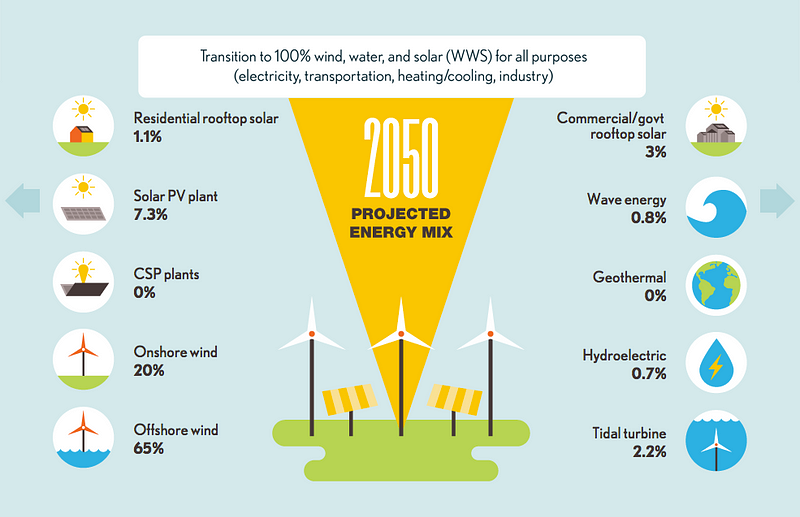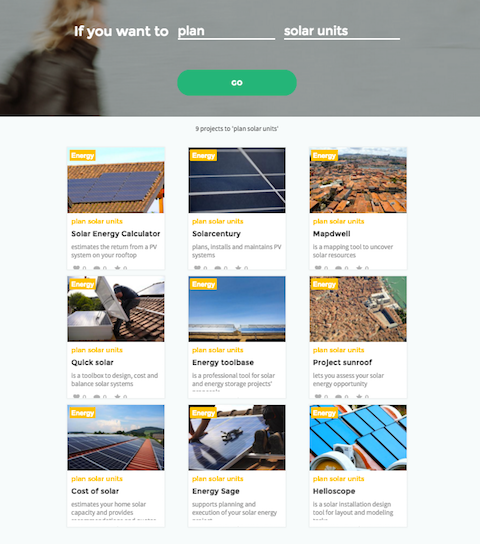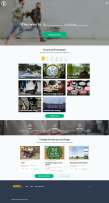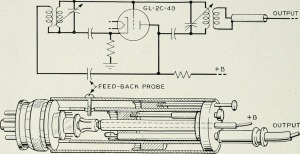This is the text of the short talk “Strategies to harness IoT and the web for sustainability” I gave to UXStrat Europe in Amsterdam, on June 5th, 2015.
In the talk, starting from the call for urgent action to tackle climate change, I argue for complementing global climate policy making with grassroots innovation fuelled by the internet to elicit the kind of fast and wide social and cultural transformation required. As evidence, I use the 26 years of radical change in nearly all aspects of social life since Sir Tim Berners-Lee’s invention of the world wide web. Referring to examples from the cleanweb movement, I show how web platforms, apps and IoT enable the redefinition of our everyday interactions with the environment: from food to mobility; from energy to water. I close by claiming that digital innovation will play a key role in our transition, in the words of Naomi Klein, from our current extractive “Take” mindset to a new regenerative “Take, give back, take care” mindset.
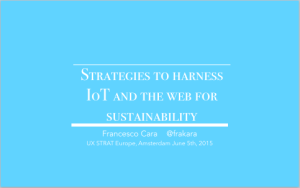
Thank you Paul (i.e. Paul Bryant, the producer of UXStrat) for the opportunity to present what is for me a new line of strategic enquiry to UX Strat Europe, and, in the spirit of Lean UX, test my thinking as early as possible with the right audience.
After many years of primarily business-driven design and design strategy work, I felt I had honed skills I could apply more broadly. So I started a new project to research a topic that I, like many others, consider to be priority number 1: tackle climate change. <2°C (i.e. less than 2 degrees Celsius) is the code name of the project I’m running in connection to the cleanweb community. <2°C refers to the United Nations Framework Convention on Climate Change target for the max average surface temperature increase (over the pre-industrial average) that will limit the effects of climate change on the planet.
The strategic question I have been exploring is about mindset shift. Can the cultural and behavioural change required to reduce emissions, waste and demand on natural resources be accelerated? And how?
Shortly I will address the reasons why an acceleration is so important and why grassroots movements are key alongside institutional policy making. But first, let’s have a brief look at the current state.
Looking at the demand side first, there are very encouraging signals of significant cultural shifts happening as more and more people adopt new forms of consumption, such as making, exchanging, reconditioning, recycling, that extend products’ life, reuse materials and reduce waste; of mobility, with a growing preference for electric vehicles, public transports and bicycles; a shrinking car owners’ population in many regions that reduce CO2 emissions; of shifting energy generation to renewable energies. A trend that had come to a quite abrupt halt in 2008 with the financial crisis and the recession that followed.
Looking at the offer side, we see extremely dynamic technological innovation happening in the area of cleantech, that is, all those technologies that improve productivity and efficiency over conventional technologies, while using less natural resources, emitting less pollutants and producing less waste. And also social innovation in the area, that some call collaborative consumption and others sharing economy, that offers alternative solutions to ownership: lending, borrowing, renting, swapping of nearly everything, from vehicles to accomodations, from clothing to power tools; from land to skills…
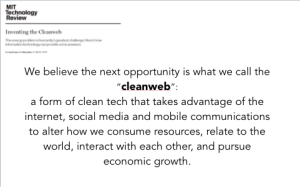
What is cleanweb, MIT Technology Review, 2012
But what I will focus on today is a particular type of innovations that goes under the name of cleanweb and uses the web to create a bridge between society and cleantech.
Sunil Paul, the founder of Sidecar (a San Francisco-based ride sharing service) and Nick Allen, his partner at Spring Ventures, introduced the term cleanweb in a MIT Review article in 2012.
As an illustration, let’s take crowdfunding, that is “the practice of funding a project or venture by raising many small amounts of money from a large number of people, typically via the Internet (Oxford Dictionary)”, hence a fundamentally web-enabled behaviour; and apply it to finance a renewable energy project. This cleanweb solution empowers communities and individuals to engage directly in driving the transition to renewable energy by planning, funding, building and operating low-carbon energy systems. So what cleanweb does is use the strengths of the web in terms of reach, interaction, trust-building and control to make new forms of action possible.
Let’s go back to the key question of Why do we need to accelerate the transition to a low-carbon way of living?
The discourse on climate change has been around for a number of years. But there is a new urgency growing with compelling cases being put forward by world experts, like Lord Nicholas Stern, and critical thinkers, like Naomi Klein.
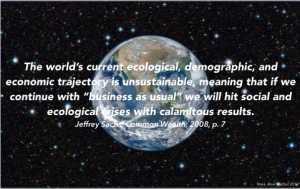
Geoffrey Sachs, Common Wealth (2008)
One of the most thorough analysis of the consequences of climate change I have read comes from Jeffrey Sachs, Professor of Sustainable Development at Columbia University, and Special Advisor to UN General Secretaries Kofi Annan and Ban Ki-moon on the Millenium Development Goals.
Two graphs help to understand the world’s evolution if we continued with “business as usual”.
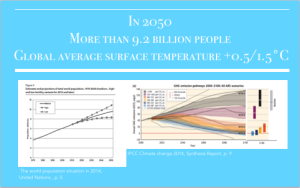
The World Population situation in 2014, UN (left) and IPSS Climate Change, Synthesis Report 2014 (right)
In 2050, that is in 35 years time, the world population will grow significantly increasing exponentially the demands for food, water and energy, and at the same time generate more emissions. The graph on the left describes three projections of total world population based on three fertility models. The medium is based on the current adjusted fertility rate and estimates over 9.2 billion people in 2050. The high-fertility model estimates a population of 11 billion, while the low model estimates a population nearing 8.2 billion people.
At the same time, if we assume that greenhouse gas emissions will continue unchanged, the global average surface temperature in 2050 will be between 0.5 – 1.5°C warmer than it is today (to set a reference, average surface temperatures were 13.7°C in 1860 and 14.5°C in 2014), leading to more frequent and intense heat waves (think of the heat wave that has struck India these past weeks, with temperatures of up to 50°C and over 2300 victims), extreme precipitations in many regions (think of the storms and floods that have hit Texas also during these past weeks), with continued acidification and warming of the ocean, and a rising global mean sea level. The graph on the right presents the latest projections of greenhouse gases to the end of the century as four trajectories. The RCP2.6 scenario at the centre assumes a rsufficient eduction of emissions to keep the global average surface temperature below a 2°C increase above pre-industrial temperature.
So in 35 years time, without quick and decisive actions, we will be in a situation where we will need to feed many more people on a more inhospitable planet.
But agreeing on quick and decisive actions on a global scale and implementing them is an extremely complex, lengthy process.
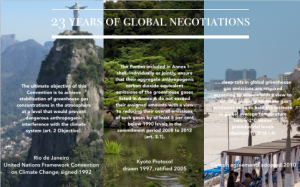
The International Community has been very active in developing policies to tackle the challenge of climate change. But global negotiation processes take time, and implementation even longer. It was 1992 at the Rio de Janeiro Earth Summit that the issue of man-made Climate Change was first recognized and a framework to negotiate specific International treaties able to set binding limits on greenhouse gases (GHG) emission was agreed. Back in 1992, the main objective the International Community was pursuing was to stabilise GHG concentration in the atmosphere. But we had to wait 13 years, for the Kyoto Protocol, the first legally binding contract to reduce GHG, to be signed, even though it had been drawn in 1997. It took another 5 years to take another step forward towards reducing emissions with the Cancun agreement. The agreement sets a new target, that future global warming should be limited to below 2 degree Celsius relative to the pre-industrial level and at the end of this year, the Paris Conference will hopefully fulfill its aim “to reach, for the first time, a universal, legally binding agreement that will enable us to combat climate change effectively and boost the transition towards resilient, low-carbon societies and economies.”
If everything goes well in Paris, it will have taken the International Community 23 years to reach universal legally binding agreements to respond to climate change, and it will take five more years to start implementing them.
To accelerate our response, it is therefore necessary that global climate change policies be complemented with grassroots initiatives to reduce carbon emissions and the stress on the planet’s resources. Having all been part of the digital revolution, we know that social change can happen quickly when innovation, collaboration and resources are open and plentiful.
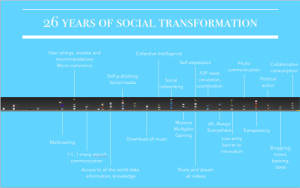
The evolution of the internet society
The “too-small to read” timeline retraces some of the major steps in the evolution of the internet society. It starts with Sir Tim Berners-Lee “Information Management: a proposal” in 1989 where the principle of “a networked hypertext system to manage all that knowledge” was set out, followed by the release of the first popular graphic browser Mosaic, in 1993.
From that moment on, a social and cultural transformation of unprecedented speed and breath unfolded. Consumption became participative (1994). Communication and socialization grew in intensity, variety and expressiveness (1998-99). Learning opened up in terms of both availability of knowledge, collaboration and participation in creating new knowledge (1997, 2001, 2012). Everyday activites were disinter-mediated, giving direct control to individuals and groups. Direct political participation brought profound changes across the world (2008, 2011, 2013).
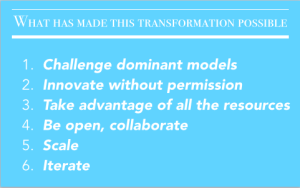
Cultural drivers of transformation
Some of the key values that have made the success of the web as an enabler of change can be equally effective in driving the exploration of new ways of living that are more sustainable: don’t take anything for granted – everything can be reinvented; no need to ask for permission to innovate; no need to reivent the wheel, build on the knowledge, tools, expertise available, extend it and share it back; exchange experiences, ask questions, work out solutions in the open – you are part of a collective intelligence; make, test, improve and new meanings and new forms of value exchange will emerge.
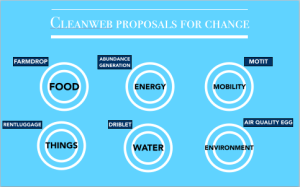
A classification of cleanweb solutions
The cleanweb space is very broad and heterogeneous. Some solutions have been on the market for a while and are mature. Some have been launched recently. Some are in pre-production and some are functional prototypes or even early concept. Together they are a demonstration of human ingenuity. I find it useful to group innovations in six main categories, each corresponding to a life cycle:
1. Food encompasses solutions to help to grow food to solutions to reduce food waste
2. Energy covers the cycle from power generation to storage
3. Mobility corresponds to solutions that help to plan, drive, share and repair
4. Things covers the cycle from making and ownership of goods, to lending/borrowing, selling, repairing, recycling and disposal
5. Water captures the cycle from collecting to using, managing and reusing water
6. Environment corresponds to the solutions designed to measure and learn about properties of our habitat, like water level, air quality.
Building on existing analysis of the Cleanweb space by Jack Townsend and Sonny Masero, we have identified over five hundred solutions mainly focused in the Energy, Mobility and Things space. Solutions range from services that connects small farmers, customers through local facilitators (e.g. Farmdrop) to a crowdfunding platform to finance the rehabilitation of old Dutch windmills into energy generators (de Windcentrale); from IoT solutions to measure air quality (e.g. Air Quality Egg) to IoT solutions to measure CO2 emissions while driving (e.g. envirocar).
The challenge ahead of us is massive. It requires a radical mind shift. Since the industrial revolution, and the steam engine, we have grown into a one-directional mindset of taking from nature: wood, coal, oil, minerals, land, fish, water….It is difficult to imagine that we can have a different relationship with nature, one where we take and give back; we take and take care. In this talk, I have shown that we are capable of rapid cultural and social trasnformations and we have one resource, the internet, that enables the level of experimentation, collaboration and diffusion needed to drive the transition from an extractive to a regenerative mindset. And each of the Cleanweb solutions is a proposal to explore new, more respectiful, ways of interacting with nature, and with each other.
The full presentation is available here, together with the other excellent presentations from the first UXStrat Europe conference.
